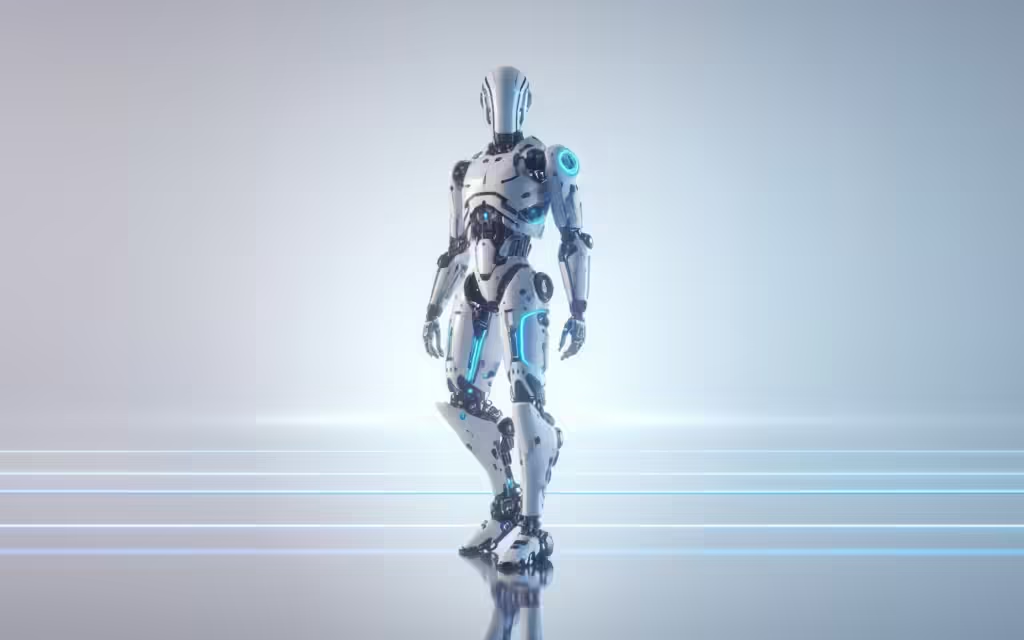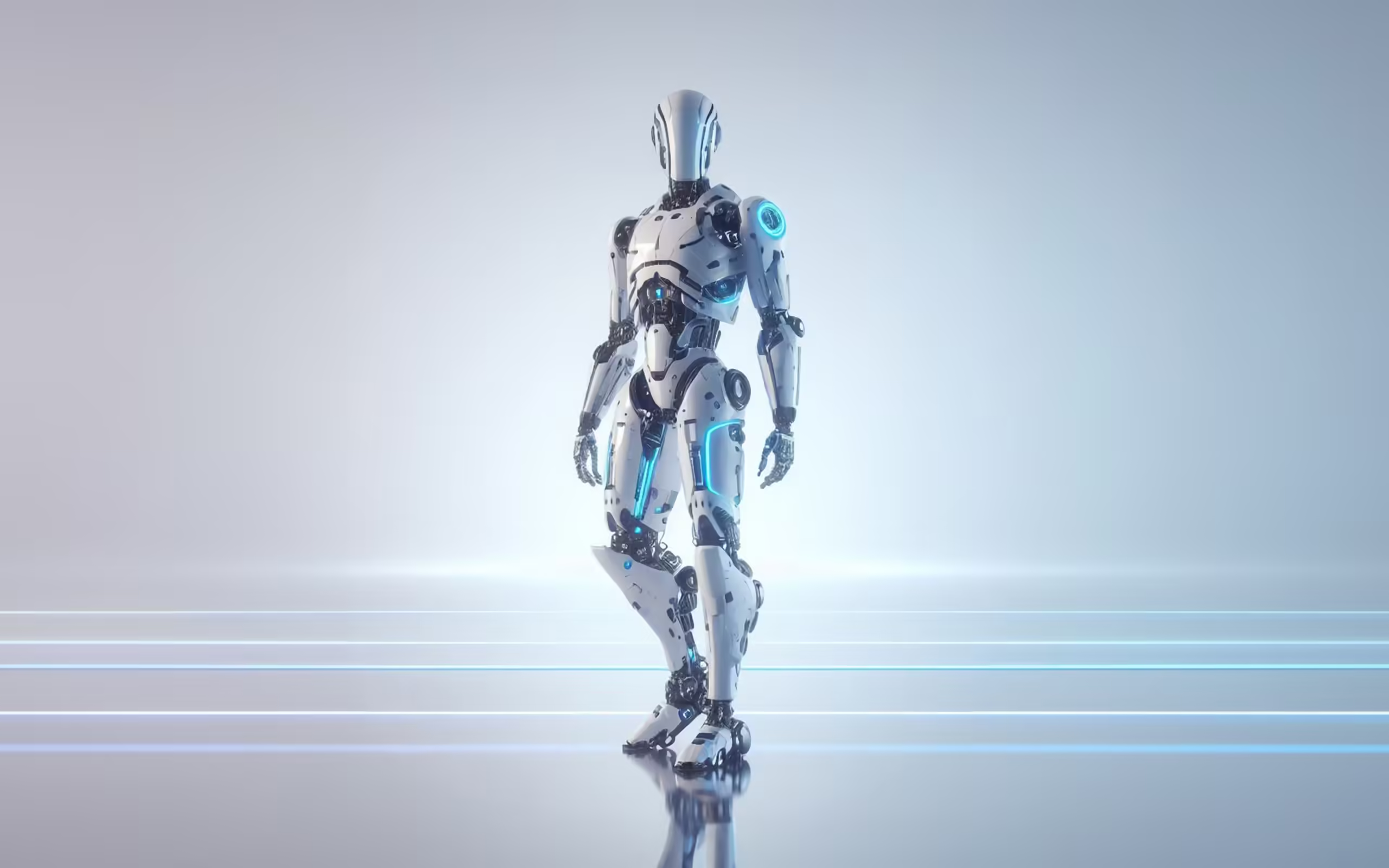In recent years, the integration of Artificial Intelligence (AI) with humanoid robots has become a groundbreaking technological achievement. These advanced machines, designed to mimic human movements and behaviors, are no longer confined to the realm of science fiction. Humanoid robots’ rise signifies a new era in robotics, as AI boosts their abilities to handle tasks independently. Advancing AI further expands humanoid robot applications, transforming various aspects of society.
What is a Humanoid Robot?
A humanoid robot is a machine designed to resemble and act like a human. The robot’s human-like features enhance its dexterity for various tasks. Humanoid robots vary in complexity, all designed to resemble humans. AI is crucial for robots to be smart, allowing them to sense, decide, and engage with people in advanced ways.
The Role of AI in Enhancing Humanoid Robot
Artificial Intelligence is at the core of what makes humanoid robot so revolutionary.AI equips robots with machine learning, neural networks, and deep learning for progressive thinking and learning. Humanoid robots can now analyze data, understand speech, and recognize objects, going beyond basic tasks.
Key Advancements
However, several key advancements in AI are driving the future of humanoid robots. For instance, AI-powered vision systems enable robots to see and interpret their surroundings much like humans. Robots use NLP to communicate effectively, understanding and responding to human speech in real time.

Additionally, advancements in reinforcement learning are enabling robots to learn from experience, improving their decision-making and task performance. These technological breakthroughs mean that humanoid robot will be able to perform even more sophisticated tasks in the future, from personal care to complex industrial processes.
The Benefits of AI-Driven Humanoid Robots
AI-driven humanoid robot offer significant benefits across various industries. In healthcare, they can assist doctors and nurses by performing routine tasks like monitoring patients’ vitals or providing physical therapy. Although, Their ability to process vast amounts of medical data can also help in diagnosing conditions faster and more accurately.
In customer service, humanoid robots equipped with AI can engage in meaningful conversations, assist with inquiries, and provide personalized service 24/7. This leads to enhanced customer satisfaction and reduced operational costs for businesses. AI’s ability to continuously improve the robots’ efficiency and capabilities makes them an invaluable asset in these fields.
How Humanoid Robots Are Changing the Workforce
AI-driven humanoid robots are transforming the workforce by automating tasks that once required human intervention. In manufacturing, for example, humanoid robot can take over repetitive, physically demanding jobs, improving productivity while reducing the risk of human error. In the service industry, robots can perform administrative tasks, handle customer queries, and even deliver goods.
While this automation can lead to greater efficiency, it also raises questions about the future of employment. However, many experts believe that humanoid robot will complement human workers rather than replace them, taking on tasks that free up human workers to focus on more complex and creative roles.
The Future of Humanoid Robots
Looking ahead, the future of humanoid robots seems boundless. As AI continues to advance, robots will become even more capable, with improved cognitive abilities and better physical dexterity. Future humanoid robots will likely be able to work in more delicate environments, like homes, schools, or hospitals, performing roles that require high levels of empathy and human interaction.
Moreover, the development of more powerful AI algorithms will allow these robots to operate autonomously, making decisions and learning from their experiences. Although, We may even see humanoid robots integrated into everyday life, offering assistance to the elderly, acting as personal assistants, or even serving as companions.
AI-Powered Humanoid Robots in Entertainment and Social Interaction
AI-powered humanoid robots are not only revolutionizing industries—they are also making waves in entertainment and social interactions. In the entertainment sector, humanoid robots are being used as actors in films, performers in shows, and even as hosts for events. Their ability to learn scripts, interact with humans, and perform complex movements makes them ideal for these roles. In social settings, humanoid robot can serve as companions, offering conversation and companionship, and even engaging in interactive games.
How AI is Making Humanoid Robots More Autonomous and Intelligent
One of the key advantages of AI in humanoid robots is their growing autonomy. With machine learning, robots can learn from experience and improve their actions over time. This enables them to navigate complex environments, make decisions based on real-time data, and adjust to changing circumstances.
AI algorithms allow humanoid robots to perform tasks without constant human oversight, making them increasingly reliable in situations that require quick thinking or adaptation. As AI continues to advance, these robots will become more self-sufficient, able to perform complex tasks in unpredictable environments without human intervention.
How AI-Driven Humanoid Robots Will Shape the World of Tomorrow
In conclusion, AI-driven humanoid robots are not just a technological marvel—they are the future of robotics and automation. As AI continues to advance, these robots will become more intelligent, autonomous, and capable, impacting industries ranging from healthcare and entertainment to customer service and manufacturing. With their ability to learn, adapt, and interact with humans, humanoid robots are poised to revolutionize the way we live and work.
While challenges remain in areas such as ethics and job displacement, the potential benefits of AI-powered humanoid robots far outweigh the hurdles. The world of tomorrow will undoubtedly be shaped by these remarkable machines, leading to a future where humans and robots work side by side to create a better world.

